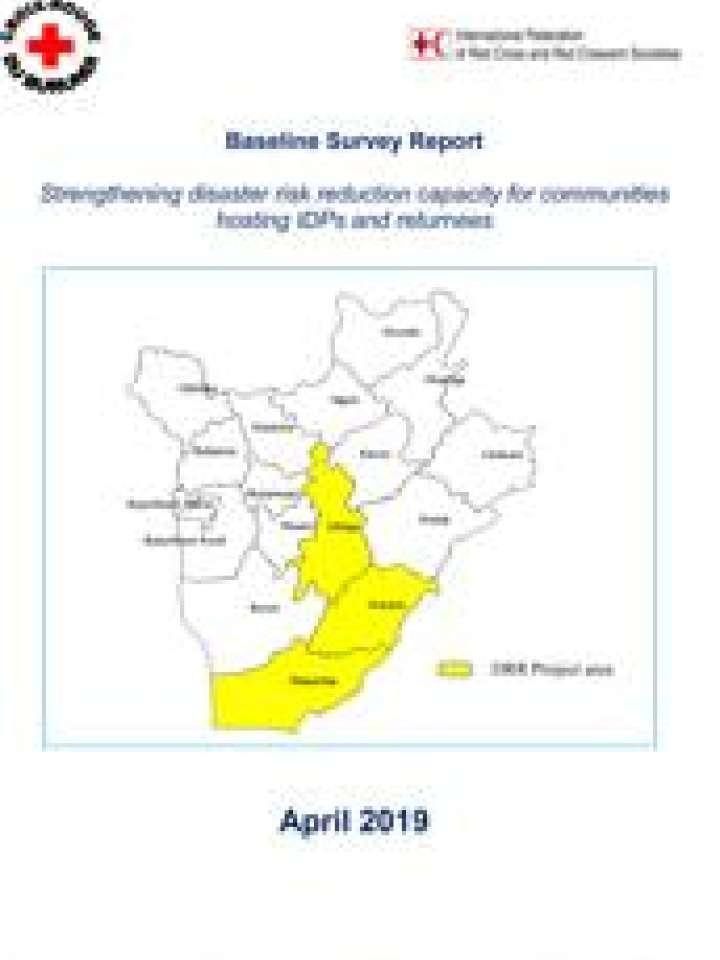Baseline survey report: Strengthening disaster risk reduction capacity for communities hosting IDPs and returnees
The population of Burundi is more than 90% rural with a young population (44% under 15 years) and a high fertility rate, even if in decrease compared to previous statistics (5.5 per woman - DHS 2016-2017). Burundi has made significant progress in human development and poverty reduction since mid-2000. Burundi's economy grew between 2010 and 2014, but changes in the political environment in 2015 hit the economy and weakened the health system. Access to health is becoming increasingly difficult due to a fragile economic situation. The estimated life expectancy is 56 years. Under-five mortality is 83/1000 and maternal mortality 740/100 000. According to WHO, the leading causes of death for children under 5 are acute respiratory infections (19%), diarrhea (12%) and malaria (5%), while neonatal causes account for about 30%.
Malnutrition is endemic; almost 60% of children under 5 suffer from stunting. More than 70% of the population practices agriculture and most are subsistence farmers. The density of the population, the degradation and the erosion of the grounds make this agriculture difficult to have a sufficient food production. More than 60% of the population lives below the national poverty line. About one third of households are food insecure, ranging from severe (7%) to moderate (25%). About half of the population does not have access to improved sanitation. Food insecurity is alarmingly high: almost one in two households (around 4.6 million people) are food insecure. Burundi suffers from low agricultural productivity: though agriculture employs about 80% of the population, the sector contributes only about 40% of GDP. There is very limited access to water and sanitation, and less than 5% of the population has electricity.
Burundi government’s efforts at poverty reduction are constrained by myriad challenges, such as a weak rural economy; a heavy reliance on development aid; economic policy that does not allow for the equitable distribution of resources; vulnerability to environmental events; and strong population growth. The only positive trend is the fertility rate, which decreased from an average of 6.4 to 5.5 children per woman between 2010 and 2017.
Explore further
